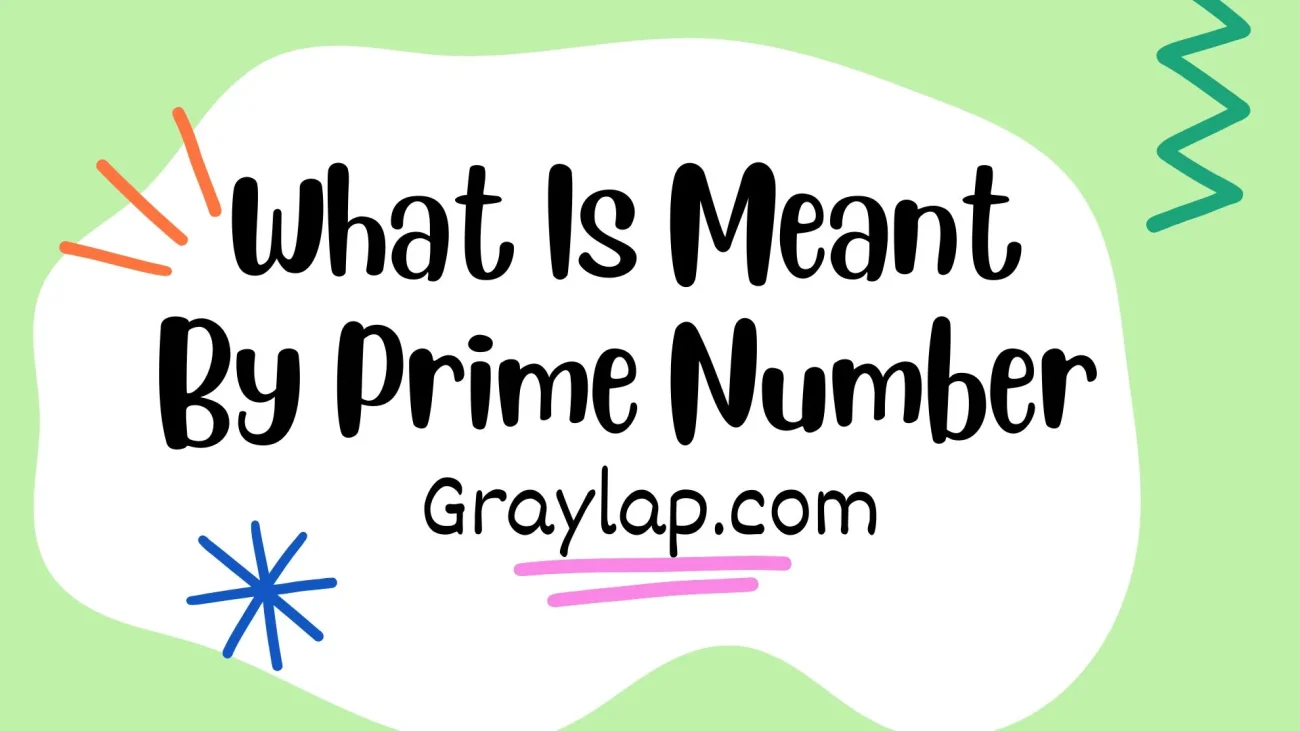What Is Meant By Prime Number A prime number is a number that is greater than 1 and is only divisible by 1 and itself. For example: 2, 3, 5, 7, 11.
In this article, you will learn what prime numbers are, what they are defined and mean, a little information about their history, and what their special properties are. Along with this, you will also find a list of all the prime numbers from 1 to 1000 and a chart to make them easier to understand. We will also see what is the difference between What Is Meant By Prime Number and composite numbers.
What Is Meant By Prime Number
A prime number is a number that is greater than 1 and is only divisible by 1 and itself. For example, if a number p is prime, it can only be divided by 1 and p. In contrast, a number that is divisible by 1 and other numbers other than itself is called a composite number, because it can be formed by multiplying smaller numbers together. In simple terms, a prime number is a positive number that is not divisible by 1 and any other number other than itself.
History of Prime Numbers What Is Meant By Prime Number
The concept of prime numbers comes from ancient Greece. The Greek mathematician Eratos Thenes (275–194 BC) devised a simple method for extracting prime numbers. He explained it using the analogy of a sieve, in which the original prime numbers are retained and the composite numbers are separated. This method is still known today as the sieve of Eratos Thenes.
Below is the list of prime numbers from 1 to 1000
Properties of Prime Numbers
Some important properties of prime numbers are as follows
- A prime number is a number that is greater than 1.
- It has only two factors: 1 and itself.
- There is only one even prime number, and that is 2.
- Any two prime numbers are always co-prime.
- Every number can be written as a product of prime numbers.
Easy Way to Find Prime Numbers
There are several ways to find prime numbers. Let’s look at one of the simplest methods What Is Meant By Prime Number
Method: Every prime number except 2 and 3 can be written in the form 6n + 1 or 6n – 1. This means that if we have a number that is not 2 or 3, we can check whether it is prime or not by expressing it in one of these two forms.
FAQs
Q1. What Is Meant By Prime Number in simple words?
A prime number is a whole number greater than 1 that can only be divided exactly by 1 and itself.
Q2. What are some examples of prime numbers?
Examples of prime numbers are 2, 3, 5, 7, 11, 13, and so on.
Q3. Why is 1 not a prime number?
Because prime numbers must have exactly two factors (1 and the number itself). The number 1 has only one factor, so it is not prime.
Read Also:
How To Calculate Percentage 5 Power Methods
Events About History Important Historical Events OF The World


5 thoughts on “Top 5 Amazing Facts About What Is Meant By Prime Number”